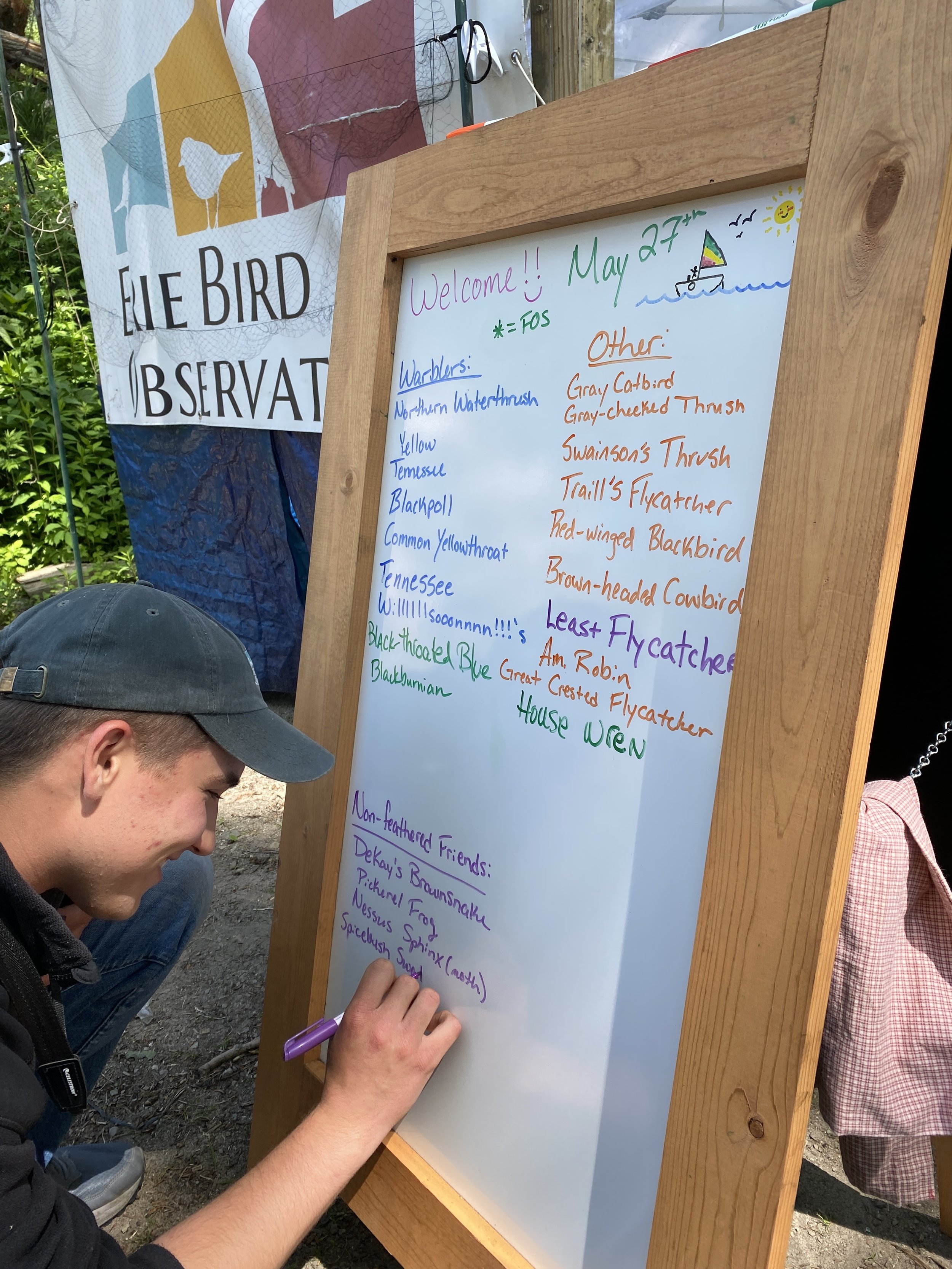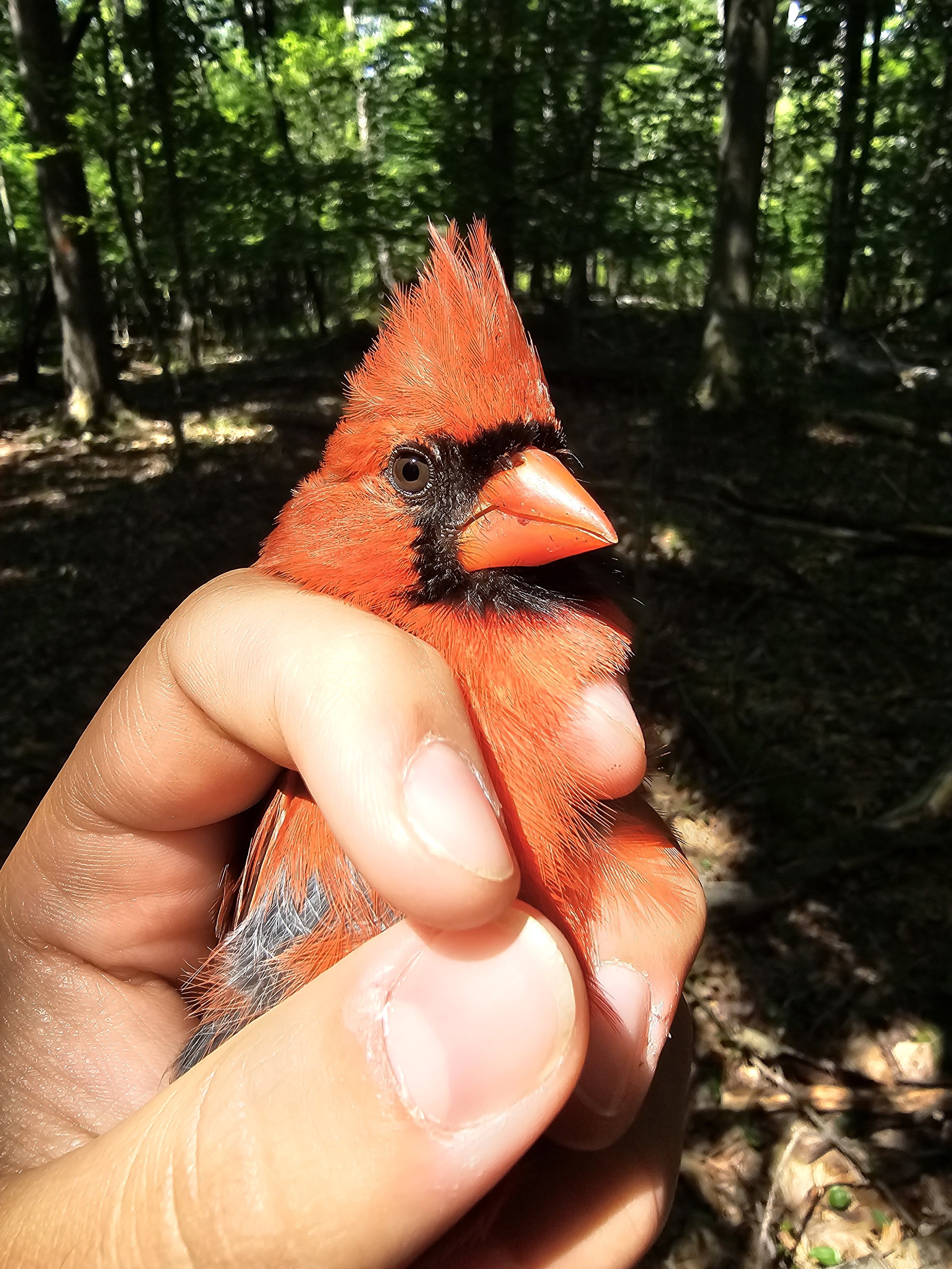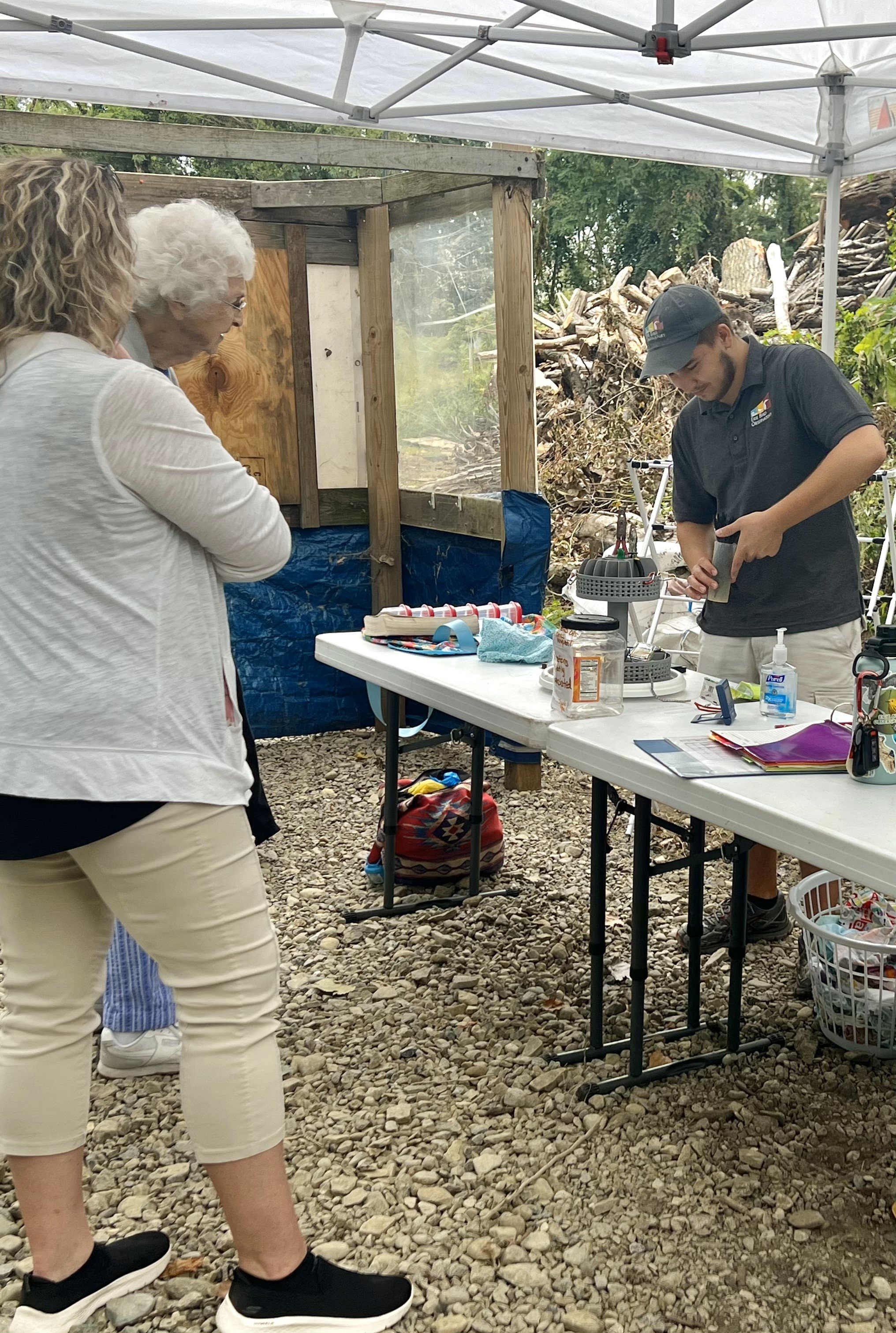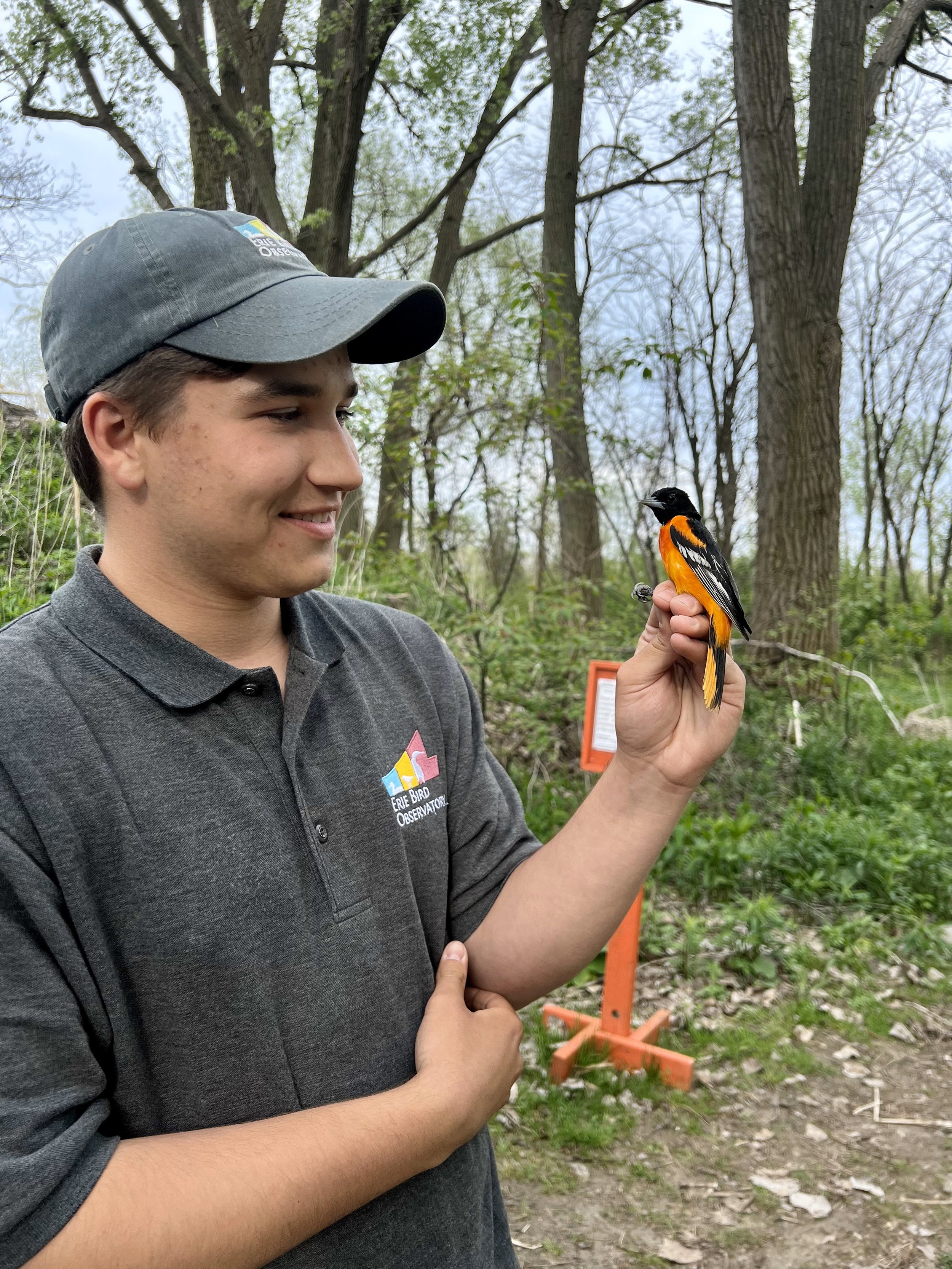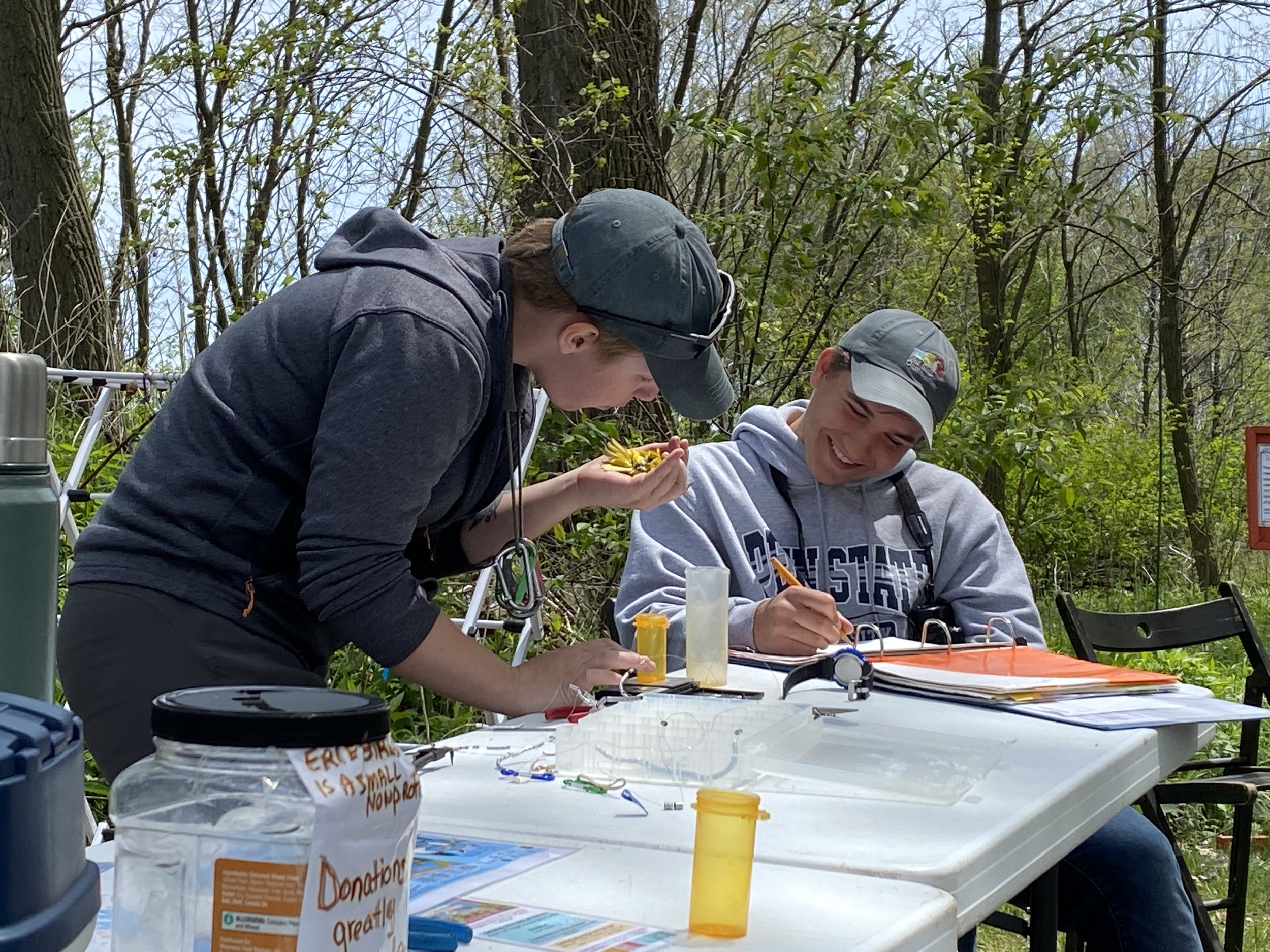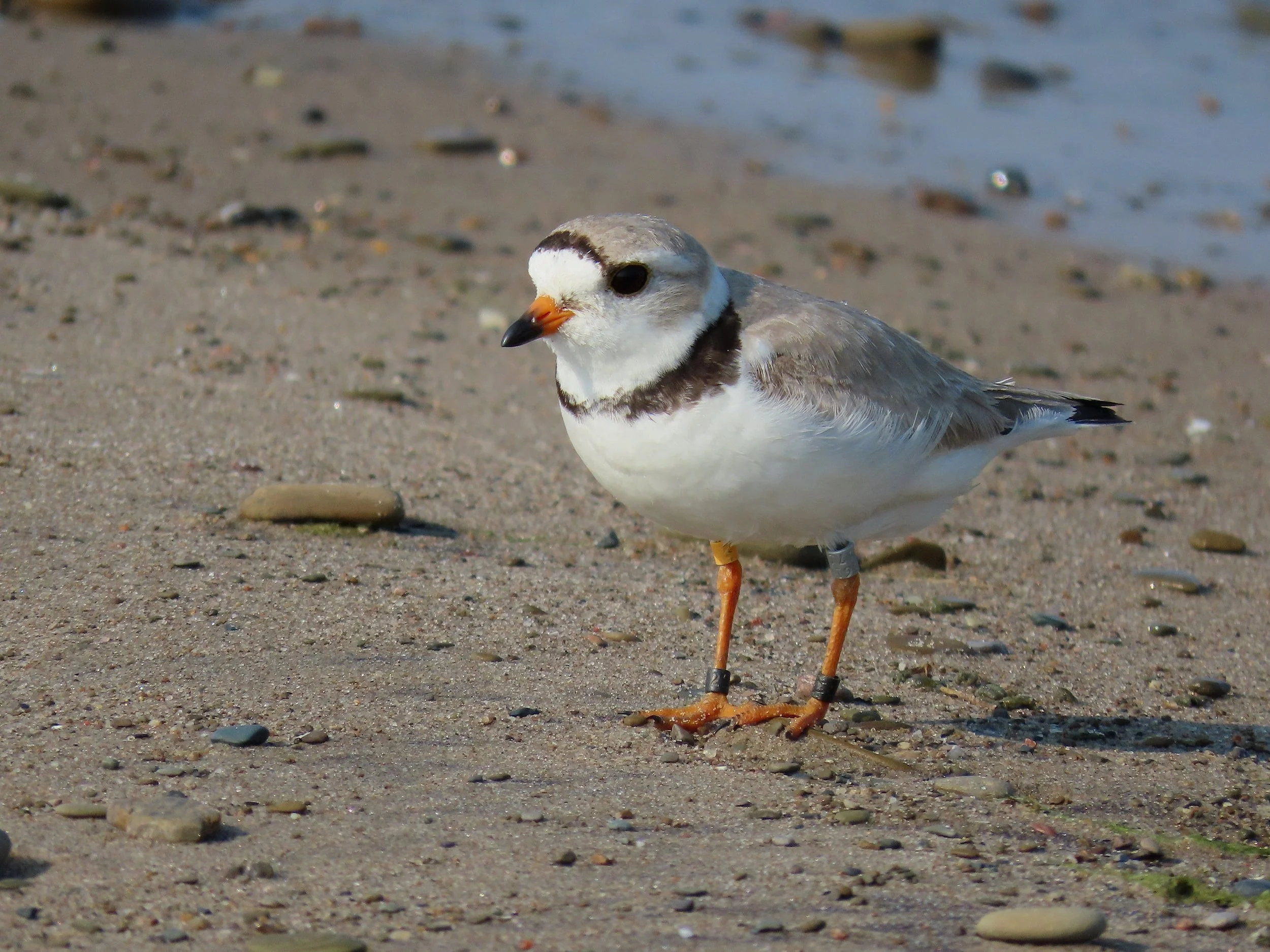A Season with Erie Bird Observatory
EBO’s Mary Birdsong sat down with Ripley Kindervater (RK) to talk about his internship with EBO in the 2023 season. Kindervater is currently a junior at Penn State Behrend majoring in biology. He is captivated by birds, reptiles, and amphibians.
EBO: What were your activities or projects during this internship?
RK: I helped at the EBO migratory bird banding station at Fry’s Landing and with the MAPS banding operation for breeding birds in Crawford County.* I also assisted with shorebird monitoring, did marsh vegetation surveys, monitored Bank Swallow colonies on Presque Isle State Park, and coordinated a breeding bird blitz team for the PA Society of Ornithology’s annual #blitz4birds fundraiser.
EBO: How were those two distinct banding scenarios alike or different from one another?
RK: Besides the Presque Isle station being for migratory birds and MAPS being for breeding birds, both banding stations gave me the opportunity to experience details about birds that one can never see in the field, like aging a bird from molt patterns and all the different protocols and data collection software associated with these banding efforts. The MAPS station follows a particular protocol that is repeated at other MAPS stations continent-wide that allows data to be compared equally, so learning those procedures was interesting. The MAPS location had secondary and mature forest habitat and the banding there made it clear to me how important preserving that habitat for breeding birds is.
EBO: How did the internship help you learn about field techniques used in studying birds?
RK: The wide variety of habitats that EBO works in gave me the opportunity to interact with diverse bird species, which is beneficial for anything I do in the future. Shorebird monitoring was a big introduction into conservation work since EBO monitors nesting Piping Plovers from the Great Lakes population which are listed as Endangered. I learned more about using typical gear like binoculars and spotting scopes to monitor these birds at a safe distance without disturbing them.
It was also great to monitor the Bank Swallows because I could watch the colonies develop. I also assisted DCNR park staff with installing psychological fencing around the colonies to educate the public about the birds’ presence. The marsh vegetation survey allowed me to creep into the lagoons and see more birds than I ever imagined and learn more about which habitats support which marsh birds, plus it gave me the chance to feed my obsession with herps.
EBO: Give me some examples of work that you did and how it may help you in the future?
RK: Coordinating the EBO team for the Breeding Bird Blitz was a new experience that I really enjoyed and it put a lot of my birding skills to the test, since both visual and audio identification was used extensively in the scouting and blitz activities. Made me a better birder. It was an intense but fun day for a good cause (raising money for PSO conservation projects). I am happy that we found 124 species in one 24-hour period and that our team won the competition!
EBO: Did you learn or do anything unexpected?
RK: I certainly did! I worked more with the Piping Plovers than I thought I would. Learning about their history in the Great Lakes and the extensive conservation efforts that go into preserving an endangered species was extraordinary. But being able to participate in some of those efforts was even more remarkable. I got to place fake eggs in a nest after the real ones were washed away and then salvaged. And I also got to be a part of the team that relocated a nest that was built in a vulnerable place—it took hours but it was fascinating and rewarding. Being a part of chick banding was also fun—those chicks are adorable!
EBO: What was your favorite part of the internship?
RK: I loved it all but monitoring Piping Plovers created some very fond memories.
*Monitoring Avian Productivity And Survivorship is a program of The Institute for Bird Populations and was created in 1989.
